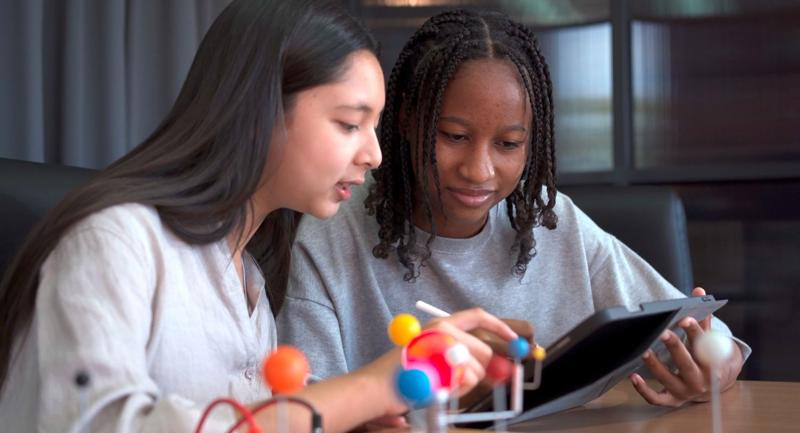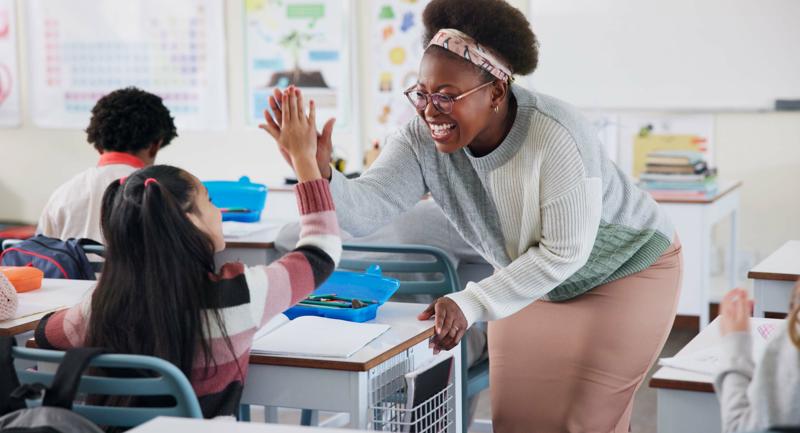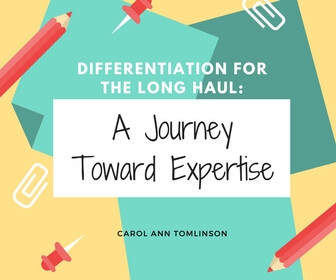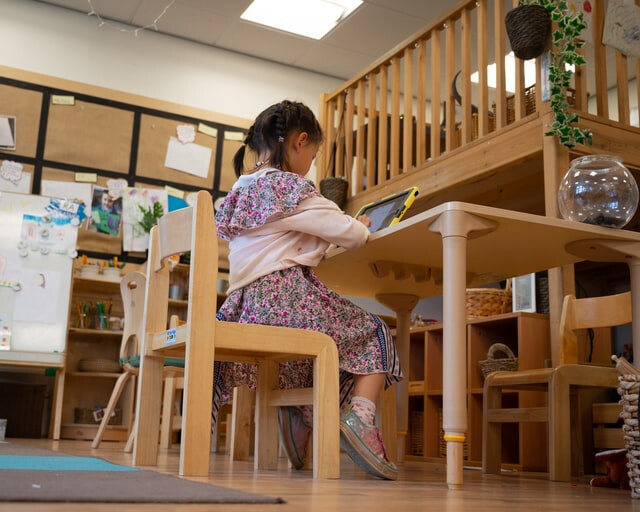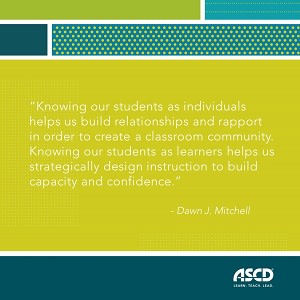Mistakes are part of any classroom: Typically, students make an error, then realize it and erase or delete it…or they don’t realize it until they get feedback and then feel disappointed in themselves or embarrassed. They also quickly learn that mistakes are bad and should be avoided, because each time they’re graded on an assignment, they’ve lost points with each mistake.
But learning something new is a messy process—and one that should be full of mistakes. Think about any time you’ve made a first attempt and it didn’t go smoothly. Each of those mistakes is a sign that you truly challenged yourself to push beyond your comfort zone. So, what if educators and students didn’t quickly erase or delete mistakes? What if, instead, we highlighted them?
I’ve been a teacher for over 20 years and taught mainly STEM subjects in elementary for the last 10. In my math classes, students learn to value the process of learning as well as the accurate final product. When they realize they’ve made a mistake, I invite students to put a heart around the error as a reminder that mistakes are important to the learning process.
In this way, they reframe mistakes as expected, powerful, and celebrated parts of learning. Each student’s math notebook becomes a portfolio of their breakthrough understandings and not simply a performance of work they already know. Documenting the process is just as important as arriving at accurate final solutions.
I invite students to put a heart around the error as a reminder that mistakes are important to the learning process.
By understanding how to value all the components of learning—mistakes included—students can develop successful learning behaviors that lead to stronger academic self-esteem: If students don’t take the time to reflect on the process and figure out what helped them to successfully accomplish a task, they’re not connecting their actions with eventual, positive academic outcomes. Highlighting mistakes can support this self-awareness and lead to greater student ownership over their learning.
Redefining Mistakes
Mistakes can be classified in many ways, but I’ve found three categories to be most useful to my students. The first are sloppy mistakes, which typically happen because students are working quickly or aren’t particularly focused at the moment. These are the common types of errors that make us say, “Oh! I didn’t mean to do that!”
The second are “aha!” mistakes, which are unintentional but lead to a new understanding that is informative to us as learners. Aha! mistakes help us figure out what didn’t work and reason logically toward alternatives that may prove more successful.
Stretch mistakes are the third category: Stretch mistakes happen when students are challenged because much of what they’re processing is new. It makes sense that they will “fail” more when doing something completely unfamiliar that stretches their understanding.
When students find patterns in the types of mistakes they’re making, they take greater ownership of the learning process.
When students take the time to find patterns in the types of mistakes they’re making, they take greater ownership of the learning process and are more willing to challenge themselves academically. In my classroom, our math block includes small group meetings around a large dry-erase table so it’s easy to see each other’s mathematical pathways. Whether we’re solving a challenging word problem together or building automaticity using a subtraction regrouping strategy, I can observe a student making a mistake and then challenge them to get curious about where they could improve their pathway. Over time, students notice and classify mistakes more on their own. When we’re attempting a brand new strategy or task, we’ll also predict the types of mistakes that could happen. Students notice that aha! and stretch mistakes represent breakthroughs in their new learning, and those are moments to celebrate. Many also realize that if they’re not making any mistakes, they may not be challenging themselves or actively engaging in learning as much as they should be.
Reflecting on Mistakes
Our change in understanding over time is learning—and it’s the evolution of our work over time that shows evidence of growth. As teachers, we can communicate that mistakes are informative and essential parts of learning by engaging students in math problem-solving experiences and letting them reflect on their informative mistakes as part of their grades.
Consider using some of these questions to support your students in reflecting on and analyzing their own mistakes:
- What types of mistakes did you notice in your work today?
- How did mistakes change your process?
- When you noticed several sloppy mistakes, what strategies did you use to become more accurate?
- I see that you challenged yourself today and that’s so good for your brain! What stretch mistakes did you notice?
- How did your types of mistakes change as you became more confident?
While a teacher can absolutely promote reflection through conversations with students, we ultimately want them to develop intentional, reflective learning habits for themselves. Here are a few times during the day when you may wish to add a brief reflection routine:
- Center time can sometimes become more about students doing activities around the room than about what they’re learning in each of those activities. Consider having students choose a reflection question and write a short response in their notebook after they clean up their center each day. Over time, I’ve actually started grading center reflections. This promotes accountability and puts more of the focus on learning.
- After any kind of summative assessment, have students review their answers and classify their mistakes. Invite them to write a short reflection on the pattern of mistakes they noticed and to set a goal for themselves to continue improving.
- When students lack confidence in a particular subject, the process of reviewing mistakes after a summative assessment like a quarterly benchmark test can be reframed into an empowering learning experience. Consider meeting individually with students who scored lower than expected so you can frame their score as an opportunity to look at the details of each answer. When you work together to classify each mistake, you’re also identifying discrete areas of growth. The assessment score becomes less about a low number and more about an action plan for continued growth. Your less confident learners may also realize how many of their mistakes were actually sloppy mistakes and that slowing down, rereading the text, or checking with a second strategy will help them perform more successfully in the future.
Sharing Mistakes
This is especially powerful in math, where we are often focused solely on accuracy. The entire classroom culture shifts when a teacher invites small groups to solve a challenging, open-ended math problem and then present to the whole class their most informative mistake during the problem-solving process. Suddenly, the students are embracing breakthrough moments and truly finding evidence of learning; it’s not just teachers grading with a red pen.
The culture shift continues when our more confident mathematicians make and share mistakes just like those who are struggling. The classroom becomes a space where an authentic growth mindset is possible for all students. Everyone is capable of making progress—and mistakes are an expected, important component of that growth.
The classroom becomes a space where an authentic growth mindset is possible for all students.
Let’s amplify mistakes with our actions and not just our words: What if teachers modeled how to use mistakes as information, intentionally analyzing their own mistakes in front of students? This shift releases teachers from needing to be the fastest, most accurate fountain of all wisdom in the classroom and supports our role as lifelong learners. It also allows educators to authentically model a growth mindset.
We can innovate our teaching practices by trying new things, aware that mistakes are a sign that we’re growing as educators. We can show how we’re challenging ourselves and how that leads to some stretch mistakes that inform the process.
As teachers already know from experience, and as John Hattie’s research demonstrates, trusting and positive academic relationships are at the heart of the important work educators do every day. Sharing our mistakes and encouraging our students to learn from theirs humanizes us and helps us connect with our students. At the end of the day, that’s really our job. Mistakes are an effective way to elevate student learning, so let’s amplify their power in our classroom cultures.




